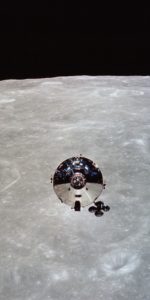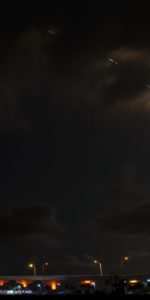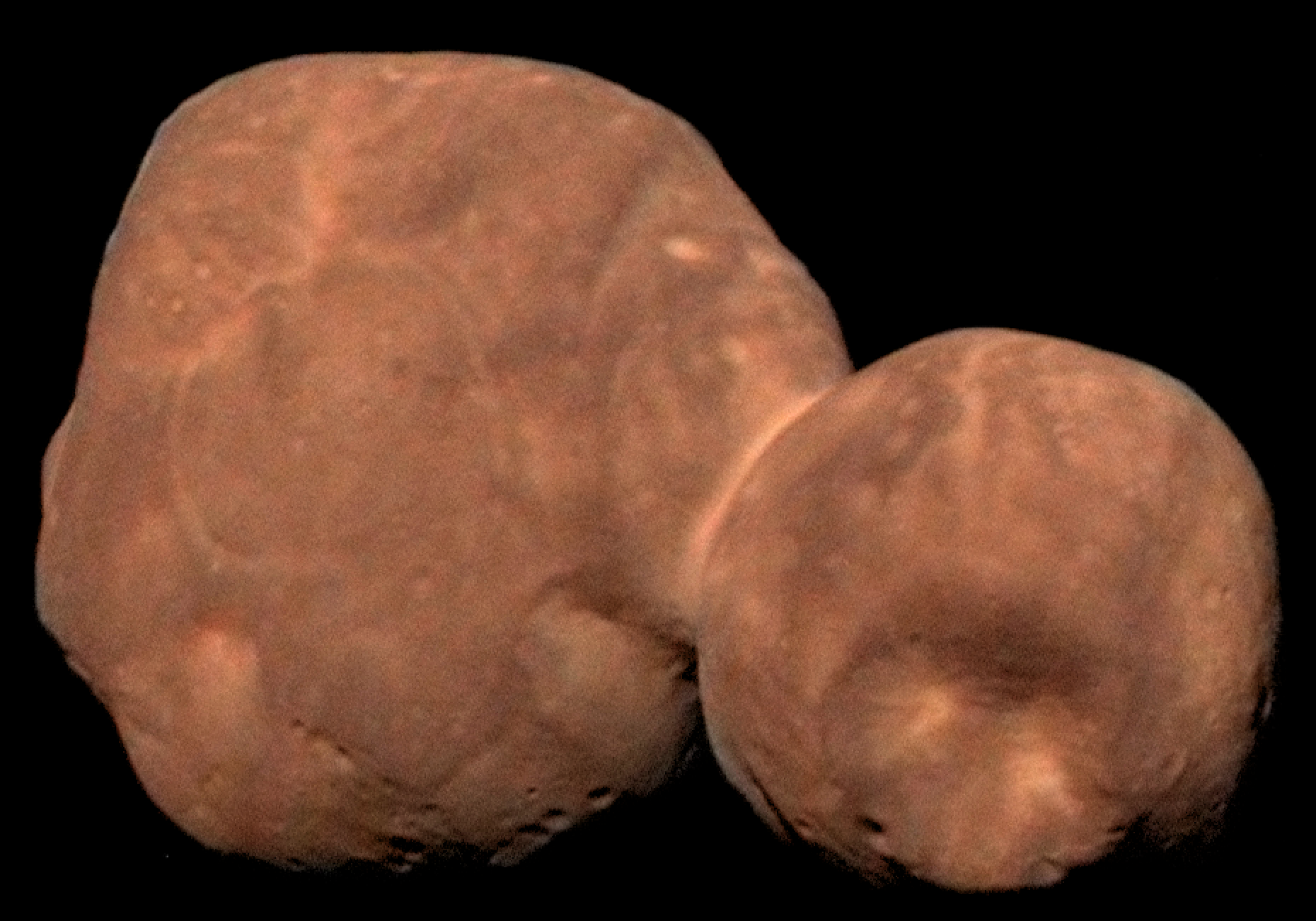
The first science results from the flyby of 2014 MU69 by NASA’s New Horizons spacecraft have now been published, revealing more details about one the strangest objects in our Solar System.
New Horizons flew past the very small and intriguing world on Jan. 1, 2019, long after it conducted a similar historic flyby past Pluto and its moons in 2015. At four billion miles away, 2014 MU69 is the most distant object in the Solar System to ever be visited by a spacecraft from Earth.
Now, the New Horizons team has published the first in-depth profile of this enigmatic object, which is a planetary building block, a relic left over from the formation of the Solar System billions of years ago.
“We’re looking into the well-preserved remnants of the ancient past,” said New Horizons Principal Investigator Alan Stern, of the Southwest Research Institute, Boulder, Colorado. “There is no doubt that the discoveries made about Ultima Thule are going to advance theories of solar system formation.”
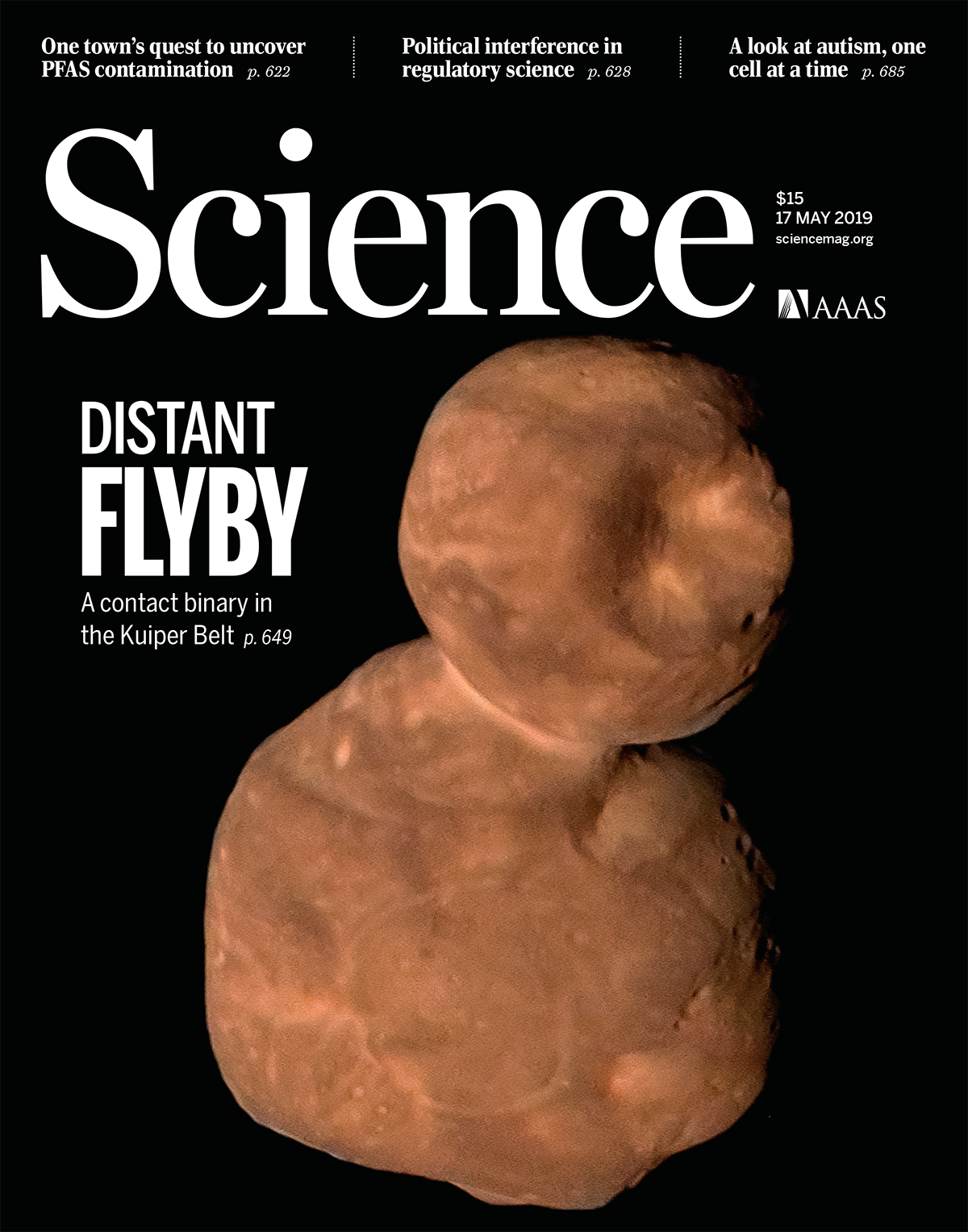
Until New Horizons’ arrival, scientists didn’t know for sure just what 2014 MU69 would look like, although there was some idea that it might be double-lobed, similar to some comets and asteroids.
But as often happens in planetary science, there were surprises in store for the mission team.
2014 MU69 did have two lobes, just barely touching each other, but one of them in particular was much flatter than anticipated, almost like a pancake. Both lobes are pockmarked by bright spots, hills and pits. The largest depression is a 5-mile (8-kilometer) wide feature nicknamed Maryland crater, which may be an impact crater, but otherwise no obvious craters have been seen.
Scientists think that the two lobes were once separate, but fused together in a “gentle merger” where both objects were moving very slowly when they collided. Just how that happened isn’t clear, but the alignment of the axis of each lobe indicates that before the merger, the two lobes must have become tidally locked, meaning that the same sides of the lobes always faced each other as they orbited around the same point. This is similar to how the Moon always has one side facing Earth.
Other pits, however, may not be classic craters, but rather formed by material falling into underground spaces, or exotic ices transforming from a solid to a gas (sublimation) and leaving pits in its place.
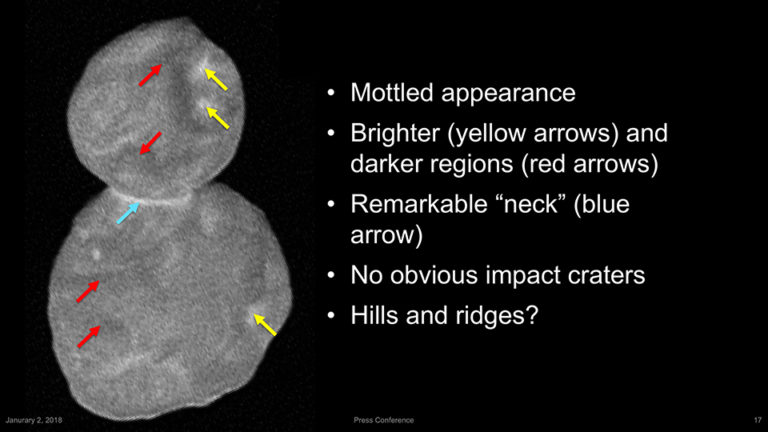
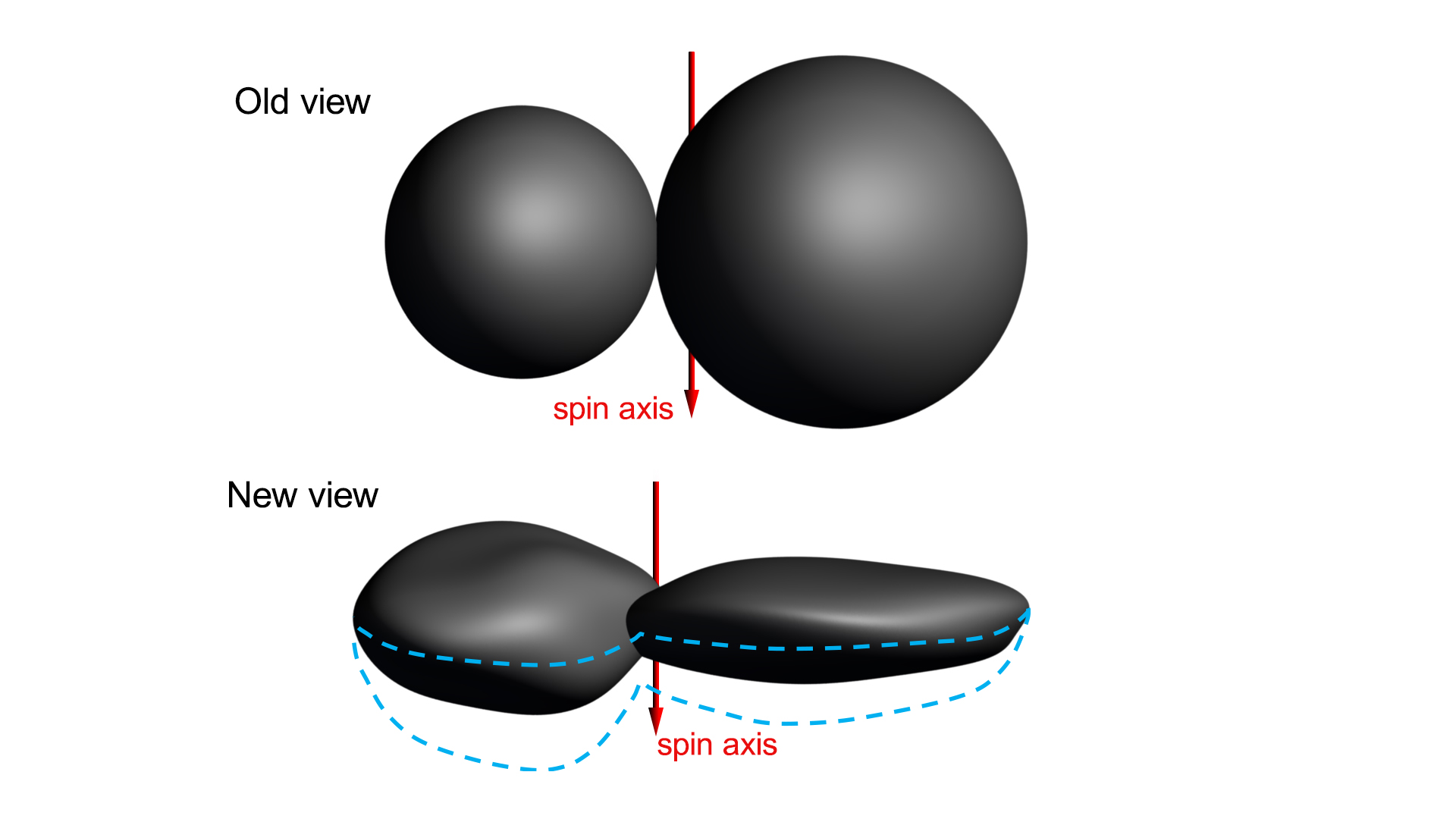
One of the most unusual features is a bright “ring” that encircles the “neck” of the object, between the two lobes.
2014 MU69 is weird, like nothing else in the Solar System.
2014 MU69 is also one of the reddest objects in the Solar System, and the reddest in the outer Solar System ever seen up close. The color is thought to be due to organic material on the surface. New Horizons found methanol, water ice and organic molecules on the object’s surface, a more complex mixture that what is usually seen on icy objects far out in the Solar System.
“We had an impression of Ultima Thule based on the limited number of images returned in the days around the flyby, but seeing more data has significantly changed our view,” Stern said. “It would be closer to reality to say Ultima Thule’s shape is flatter, like a pancake. But more importantly, the new images are creating scientific puzzles about how such an object could even be formed. We’ve never seen something like this orbiting the Sun.”
“This really is an incredible image sequence, taken by a spacecraft exploring a small world four billion miles away from Earth. Nothing quite like this has ever been captured in imagery.”
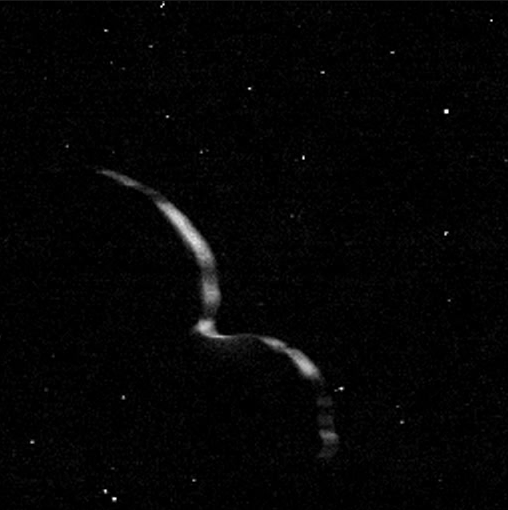
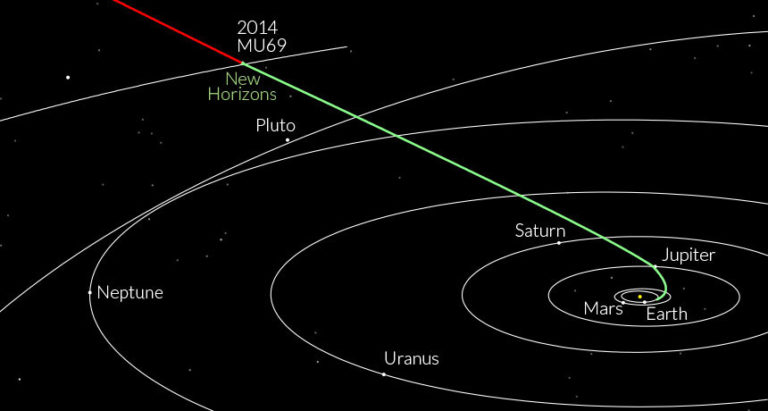
2014 MU69 resides in the Kuiper Belt, a vast region of rocky debris in the outer Solar System beyond Neptune, similar to the main asteroid belt between Mars and Jupiter. The objects in this belt – Kuiper Belt Objects (KBOs) – are ancient, left over from the formation of the Solar System billions of years ago, and range in size from a few hundred feet to a few thousand miles. Another recent study found that there is a surprising lack of objects less than a mile in size.
While all the best images of 2014 MU69 have now been sent back to Earth, there is still a lot of other data to be transmitted, which will take until 2020 to complete.
Mission scientists are now looking for additional flyby targets beyond 2014 MU69 that New Horizons can travel too, since the spacecraft is still healthy and performing well. New Horizons is now 4.1 billion miles (6.6 billion kilometers) from Earth, speeding ever deeper into the Kuiper Belt at nearly 33,000 miles (53,000 kilometers) per hour.
The science from the 2014 MU69 flyby is invaluable, since this unusual space rock is a primordial leftover from when the Solar System first formed (part of material that never coalesced into planets). The initial results are exciting, but there is still a lot that can be learned from this bizarre little world.
More information about New Horizons is available on the mission website.
FOLLOW AmericaSpace on Facebook and Twitter!
Missions » New Horizons »



